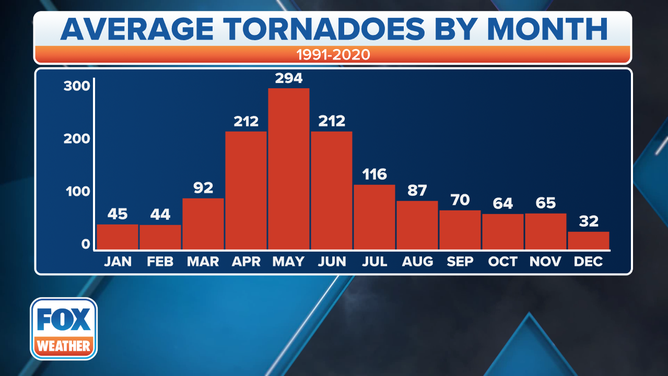Chasing twisters: The crucial role technology plays in real tornado wrangling
"We are able to get very close to the tornado," said Karen Kosiba, a research scientist at the University of Illinois. She's one of the scientists using a "Doppler On Wheels" to advance tornado research.
Chasing tornadoes with Doppler on Wheels
Storm scientist Karen Kosiba explains how tracking tornados with Doppler on Wheels, portable radar will improve the accuracy of tornado forecasting.
GREENFIELD, Iowa - Devastating tornadoes that have claimed the lives of 40 people across the country in 2024 formed the front lines for meteorologists and storm chasers to advance weather forecasting using sophisticated technology.
Every year, experts from the University of Illinois, University of Oklahoma, College of DuPage and others venture out into the heartland, sometimes traveling thousands of miles, to encounter these deadly phenomena and deploy specialized sensors.
The adventure may seem similar to the recently released "Twisters" or the 1996 hit blockbuster "Twister," but movies are far different than real life.
Karen Kosiba, a research scientist at the University of Illinois, tracks tornadoes with a mobile radar system called the "Doppler on Wheels," or what is known as the DOW for short.
The DOW is equipped with advanced radar and portable weather instruments that can scan a thunderstorm in real-time, providing critical information.
The data provides unique insights into wind speeds near the ground which can help determine a twister’s strength and environmental influences.
"We are able to get very close to the tornado," Kosiba told FOX Weather. "We are less than a kilometer away. And that means that we can measure winds very near the ground with our mobile radars…And that helps us really link what’s happening in our radar observation very close to the ground to what the damage actually looks like at the surface."
‘TWISTERS’ THE MOVIE RELEASES IN 2024
The DOW is far more advanced than what movies depict as is used in storm chasing.
In the 1996 film "Twister," a team of storm chasers tried to deploy a set of sensors crafted from pop soda cans into vortices.
Each "Dorothy" container was packed with dozens of sensors designed to deploy and study the internal structure of a tornado with results instantly fed back into computers.
Real-life studies are more complex, often requiring years to fully understand the data.
"It’s challenging to collect the data, but the real hard part and the real work comes from analyzing all the data," Kosiba said. "So, we’re not just looking at one tornado, but trying to get a general picture of what tornado winds are like and what tornado structure is like over a broad range of tornadoes. So it’s a very involved project. And it’s going to take, a lot of years and a lot of analysis to get at that."

Average tornadoes by month.
(FOX Weather)
WE ALL LOVE THE MOVIE ‘TWISTER,’ BUT IS IT SCIENTIFICALLY ACCURATE?
The EF-4 tornado that struck the small town of Greenfield, Iowa, on May 21 was one of many tornadoes researched by experts. The tornado claimed the lives of five people and was rated as the strongest twister of the year to impact the county.
"So, for this most recent tornado, it was actually relatively small compared to others, but it had very strong winds exceeding 250 miles per hour, which we measured with our Doppler on Wheels," said Kosiba. "We’re really trying to understand how this tornado formed, what the winds were like near the surface, and how the tornado evolved."
Researchers typically conclude their surveys by mid-summer as the jet stream shifts further northward, leading to thunderstorm outbreaks in the Upper Midwest and southern Canada.
Real life storm tracker weighs in on the realism of new 'Twisters' movie
FOX Weather Storm Tracker Brandon Copic joins Weather Command to talk about the new blockbuster sequel to 'Twister' and how the technology has improved in recent years in tracking tornadoes.





